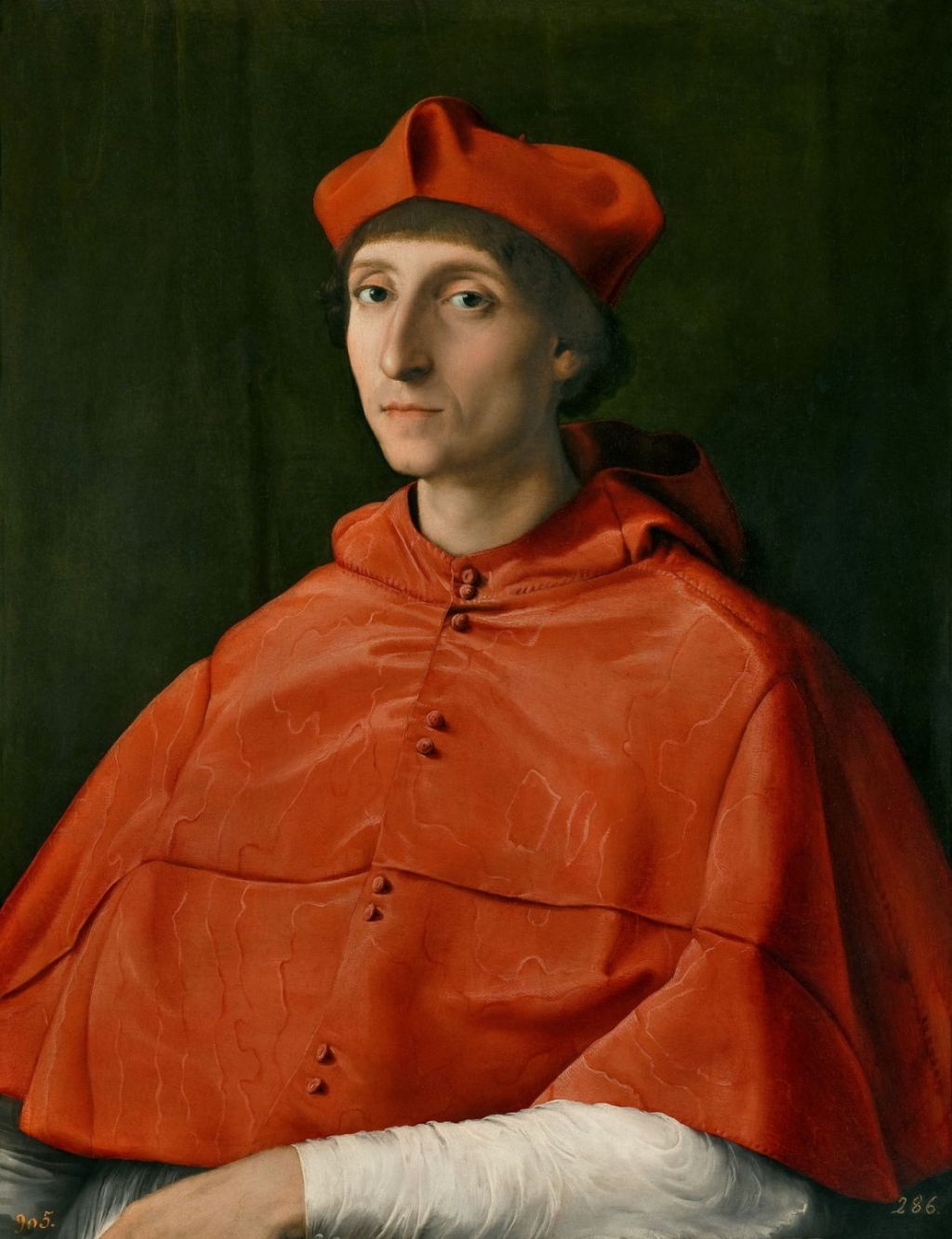One of the most important elements in painting which had to change to enable the appearance of vivid realism was the depiction of surface textures and effects. When painting an icon, the skin of a face doesn’t need to resemble real skin, but can be cued merely by colour and content. In real life these surface properties are crucial to distinguishing different skin, hair, and most of all textiles and clothing.
The Renaissance was also a period in which garment-makers used a wide range of fabrics and textiles for their visual effect. Cities like Florence had a good supply, not only from the local producers selling their wool through the city’s merchants, but through trade in textiles like silk from overseas. For contemporary painters to have ignored the properties of opulent garments would have been more than eccentric, and some, including Raphael, painted works in which garments appear breathtakingly real.

Cimabué’s Maestà was painted in egg tempera for the main altar of the church of Santa Trinita in Florence, between 1280-90. Little attempt is made to distinguish surface textures, although some use is made of lightness and pattern in fabrics to impart their folding.

Almost two centuries later, and still working in egg tempera, Piero della Francesca’s masterpiece of The Baptism of Christ (after 1437) shows only limited advance.

Later that same century, Domenico Ghirlandaio’s Madonna and Child (c 1470-75) is one of the most skilful attempts to render surface texture using egg tempera.

Early oil paintings showed progressively more attention being paid to fabrics and their surfaces. But Pietro Perugino’s superb Portrait of Francesco delle Opere from 1494 is still fairly plain in its rendering of fabrics.

It was Perugino’s pupil Raphael who became one of the leaders in the vivid rendition of surface texture, particularly in the clothing of subjects of his portraits. Portrait of a Cardinal from 1510-11 is notable for the lifelike modelling of flesh and attention to the surface textures of the fabrics. Three quite distinct fabrics are shown in this cardinal’s choir dress: the soft matte surface of the biretta (hat), the subtly patterned sheen of his mozzatta (cape), and the luxuriant folds of his soft white rochet (vestment).

Raphael sustained this through his later Madonnas, and in his Portrait of Pope Leo X with Cardinals Giulio de’ Medici and Luigi Rossi. The three figures are grouped closely together and in rich colour. The Pope sits not on a throne, but more informally, a magnificent illuminated book (thought to be the ‘Hamilton’ Bible from about 1350) open in front of him and a magnifying glass in his left hand. Every surface texture is lifelike, from the polished metal sphere on the back of the chair with its carefully projected reflection, to the hair and fur.
This development of the rendering of surface textures only followed what had occurred with the adoption of oils in the Northern Renaissance. What happened next was initally unique to the southern Renaissance, but was exported north. As early as 1501, Giovanni Bellini and Giorgione started to use impasto, initially in fine details of fabrics, metalwork, and jewellery, where those details were applied in the upper layer of paint.

This more painterly approach is shown in Parmigianino’s Mystic Marriage of Saint Catherine (c 1527-31) above, and in the detail below.

Over the next decades, such impasto passages were used by many Italian artists, and found their way to northern Europe by way of Martin van Heemskerck, who visited Rome between 1532-36.

Tintoretto’s Susannah and the Elders from about 1555 is a later example which shows how effective these passages can be. The jewellery scattered about Susannah really pops out into the third dimension, and there’s an unusual softness about the cloth with which she is drying her leg. The detail below demonstrates how these have been achieved using more gestural application of paint in small blobs and rougher strokes.

Less than a century later this looser and more painterly approach was to reach a zenith in the paintings of Rembrandt. Ongoing development in the southern Renaissance laid the ground for what was to come later.

